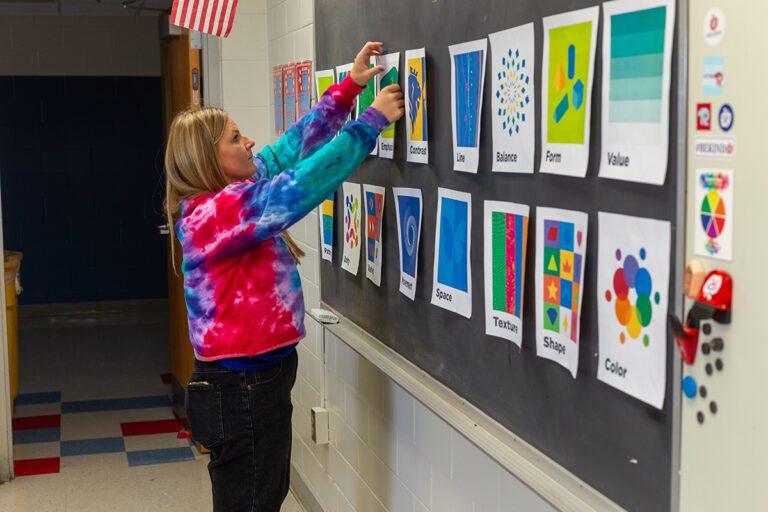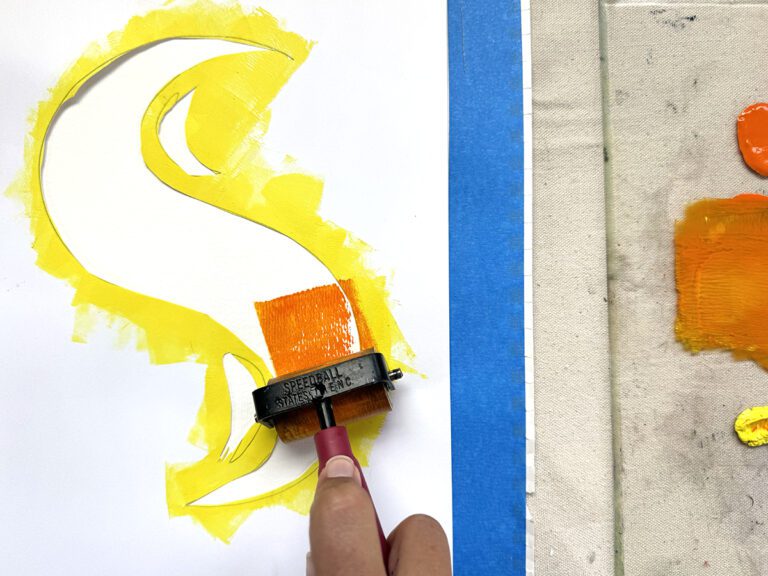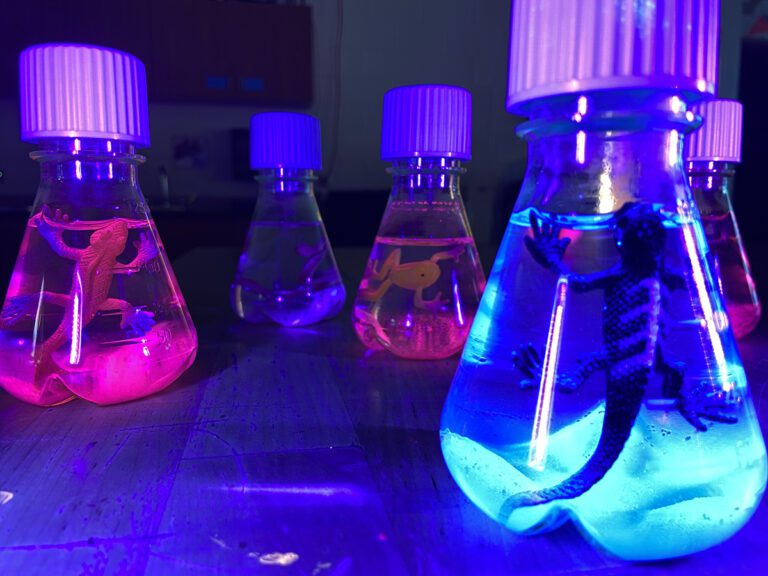Hands down, color theory is my favorite thing to teach. I do a color unit every year with each grade level not only because I enjoy teaching it, but because I believe that color theory is central to understanding and creating art. Over the years, I have tried many different ways to get students excited about color.
Here are 3 of my most successful techniques.
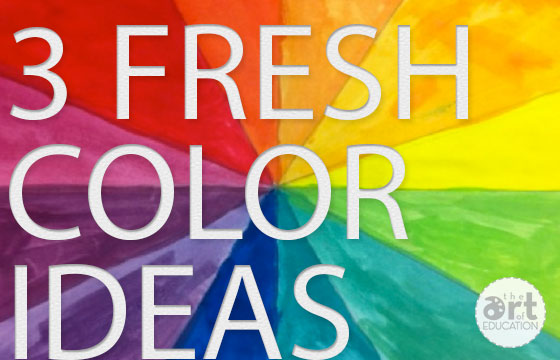
1. Dazzle them with an optical illusion!
This trick is a great “hook” for the beginning of the lesson. All you need is a simple shape cut out of bold, red constructions paper. I use a red circle about 6 inches in diameter.
At the beginning of class, I stick this red circle on the board. I have my students stare at the red circle. They are to look at nothing else, just the red circle. After about 30 seconds, I let them know I am going to remove the red circle, but they should keep looking at the whiteboard. I whip the circle away and at that moment you can hear a pin drop.
There is a little pause and then the class responds. It usually sounds like “Whoa! Wow! Do it again!” If done correctly, students should see a mint green circle appear where the red circle used to be. I use this trick to jump into a discussion of complimentary colors and rods and cones with older students. This trick is so wildly popular that students beg to see it again. If class goes smoothly, I will test out another complimentary color combo at the end of the class using an orange triangle or a purple square.
Have I piqued your interest? Try out one of my favorites included in the image below. Start at it for about 30 seconds, then re-focus your eyes on something white. What do you see?
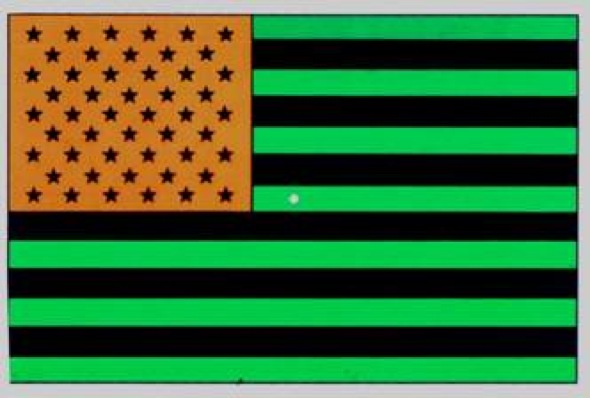
These out-of-the-box activities are the kind that your students won’t soon forget. If you’re someone who likes bringing new ideas to your classroom, you might be interested in the Diving Deep into Color Theory PRO Learning Pack. Johanna shares so many different creative ways to teach your students about color.
2. Incorporate music.
Have you ever gotten a song stuck in your head? Music is a wonderful teaching tool, proven to help students process information and make connections. There are several songs on the market about color, but this one by OK GO! is my favorite. It is visually fun to watch and allows for students to predict the answer during the 2nd verse. Warning, it is catchy!
3. Let students explore.
Make learning about color mixing like an experiment. Don’t tell students what will happen, let them find out! I suggest using non-traditional materials or techniques.
One of my favorites is bubble printing. I set up 4-6 stations around my room and the have students take turns. Each station consists of 3 paint colors (red, yellow and blue) thinned with water and a touch of dish soap in a sturdy container (I use recycled frosting cups). Each student also has his or her own straw.
Students begin with yellow paint and blow bubbles just like they would in milk (when no adult is watching of course). They use their paper to press down and pop the bubbles, leaving light yellow circles on the page. Next, they move on to red and finally blue, making sure to overlap colors and see what happens. I set a limit depending on the paper size. Usually 3-4 prints for each color. For a detailed description of bubble printing, check out this blog.
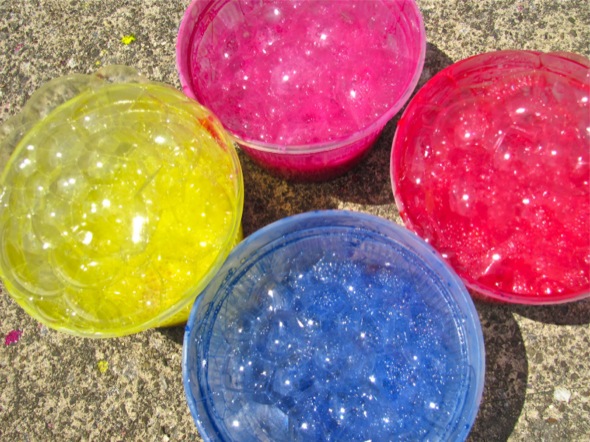
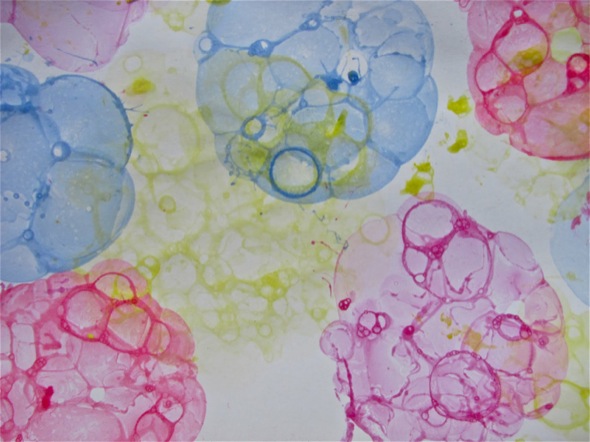
This project is all about the process, but the product is quite unique and beautiful. I use it for future book covers. It is messy, but fun and when an activity is this much fun, students do not want to misbehave and potentially miss out.
There are an unlimited number of ways to get students excited about color theory. What techniques do you prefer?
Magazine articles and podcasts are opinions of professional education contributors and do not necessarily represent the position of the Art of Education University (AOEU) or its academic offerings. Contributors use terms in the way they are most often talked about in the scope of their educational experiences.


